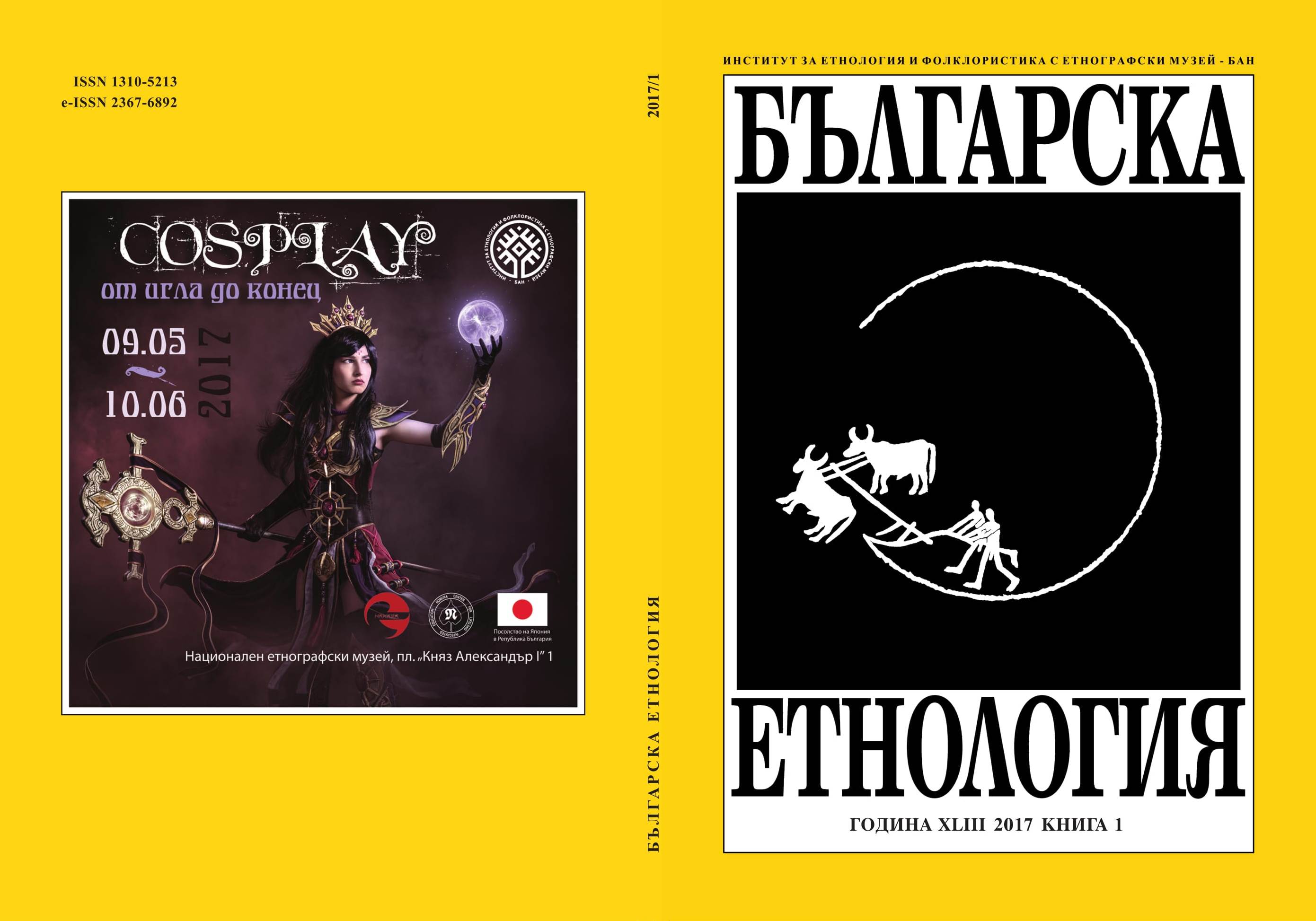
We kindly inform you that, as long as the subject affiliation of our 300.000+ articles is in progress, you might get unsufficient or no results on your third level or second level search. In this case, please broaden your search criteria.

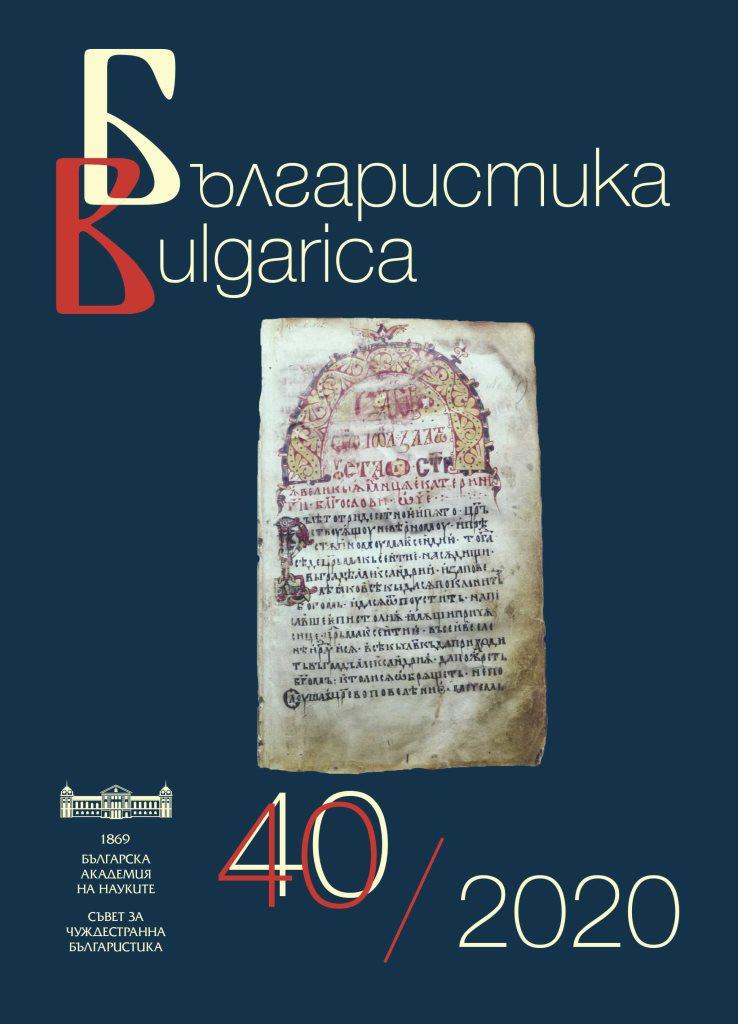
Selected bibliography in the field of Bulgarian Studies published in the current year
More...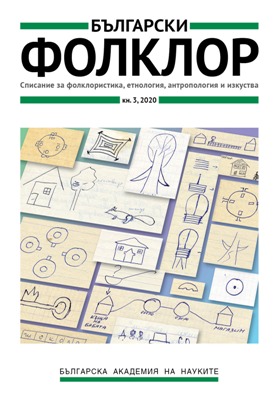
The Karioti are a Greek-speaking ethnographic group from Bulgaria, a large part of which migrated to Greece in the 1920s. The hypotheses about the emergence of the migrant community in the village of General Inzovo as well as the factors influencing the emigration to settlements in Northern Greece (the Municipality of Eginio, Thessaloniki region, and the village of Trikala in Imathias) are diverse: social, economic, political and others. The new environment in which the Karioti settled had a significant impact on the community. Language, traditional clothing and cultural features are part of the external manifestations that distinguish them from other communities. By using certain specific elements in traditional clothing, the community demonstrates a desire to be distinguished among others and vice versa, by rejecting others it reflects a desire to join the urban community.The preservation of the musical heritage of the Greek-speaking communities in the three settlements has gone through several periods, which are not identical in the two countries. Contemporary folklore manifestations and the activities of the community cultural institutions in the settlements aim to preserve the local identity of the Karioti in Bulgaria and Greece.
More...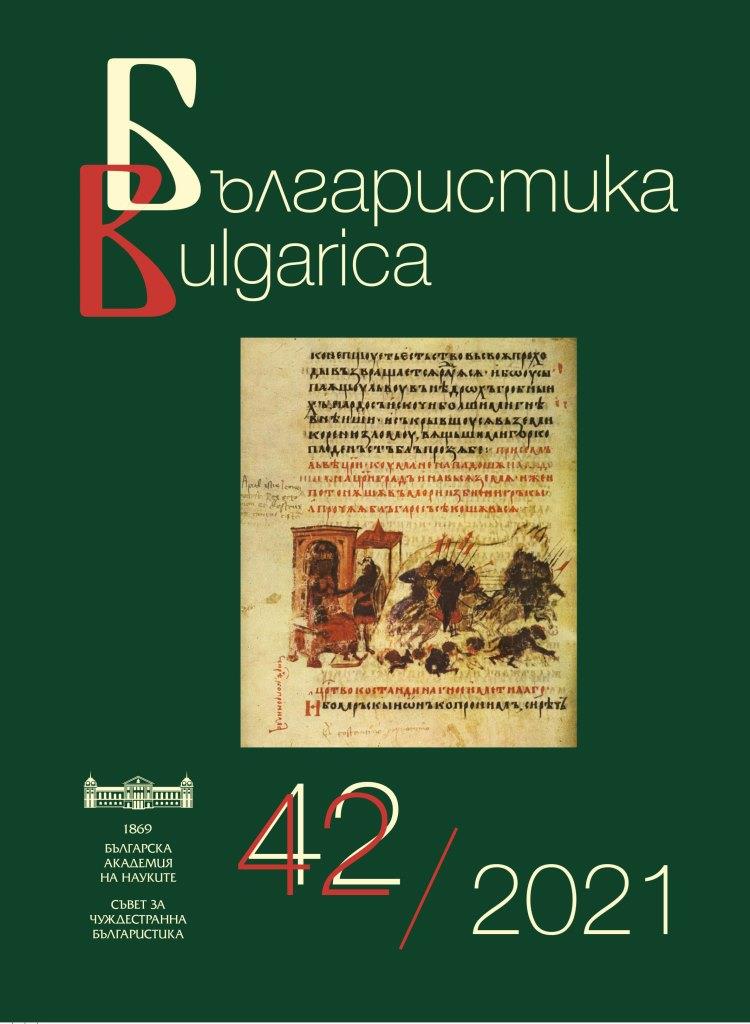
Selected bibliography in the field of Bulgarian Studies published in the current year.
More...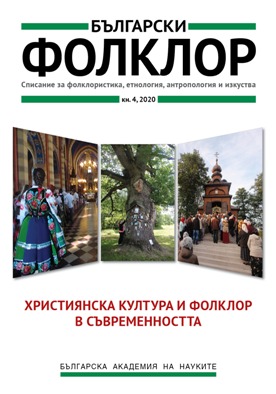
Over the last decades, the Strandzha region suffers a serious demographic crisis and the outflow of population results in significant change in the local culture. The empirical data of the current research is based on fieldwork in villages of Fakia (Central Strandzha, Sredets Municipality). The aim is to give a picture of the current condition of the folklore and religious culture through symbolic and specific phenomena. Enyova bulya custom is widely spread in Strandzha region and is conceived as an accent in the Enyovden (Yanovden) celebrations that take place on the 24th of June and is one of the main summer feast days until the ’60s of the 20th century. Enyova bulya is associated with fertility, maiden's transition and the well-being of the settlement community. Today, the custom is disconnected from the context of the festive life of the researched community as far as the world view of the main actors has been changed. Main doers are elderly women, the time of the celebrations is not exactly fixed thus the sacredness of the actions is automatically degenerated. A conclusion can be made that the custom nowadays has the characteristics of a tourist attraction in some aspects. Keeping the celebrations is perceived as a need to declare local identity and local diversity. The transformations in the religious culture of the researched community can be analysed in a similar direction. St. Modest cult (celebrated on December 18) is seen as “typical only for Strandzha region”. In the past, the cult is related to the local livelihood – livestock-raising and agriculture. For example, in Fakia village is believed that the woman that gives out ritual bread first will be the first to finish harvesting. Today, as a result of drastic changes in livelihood, the cult exists as a characteristic of local religious culture – grounds for the local dimensions of cultural identity. Anyway, ritual practices serve the local identity. Searching a motivation in tradition keeps alive a local peasant community in process of dramatic demographic and social crises in Strandzha region.
More...
The article presents religious practices and politics of memory, related to the cult of the “new martyrs” (“martyrs of totalitarianism”) in the Catholic Church in Bulgaria after 1989. The paper is based on terminological apparatus and methodology in the field of anthropology of memory and anthropology of religion, and describes the procedures of beatification of Blessed Eugene Bossilkov (beat. 1998) and bishops Fr. Kamen Vichev, Fr. Pavel Dzhidzov, Fr. Iosafat Shishkov (beat. 2002), Fr. Fortunat Bakalski, Fr. Rafael Peev, and others. The objective of this study is to elucidate major moments related to the institutionalisation of the cult, the processes of construction of sacredness, the creation of new religious practices, the commemoration practices, and the places of memory. The study explores the elements of the veneration of the “new martyrs” in Bulgaria, the connection between cult and history, and the issues of memory and the policies of memory as a form of heritage. The observations and the examples are obtained through field research and interviews conducted in several settlements in the Diocese of Sofia and Plovdiv and the Diocese of Nicopolis (primarily the towns of Plovdiv, Rakovski, Ruse, and Belene, the village of Oresh, and the city of Sofia). Relics, testimonies of martyrdom, stories of miracles, hagiographical and iconographical innovations, commemorational festivities, places of memory, related to the “new martyrs” – all of these are analysed through the prism of processes of invention of cultural-historical heritage, renovation of confessional identities, and creation of reworking models of traumatic memory in the period of socialism. The article looks for answers to the following questions: What is the character of the totalitarian martyrology in Bulgaria? How are the confessional consciousness of the Catholic communities and the character of their religious culture being transformed through the religious cults of the “new martyrs”?
More...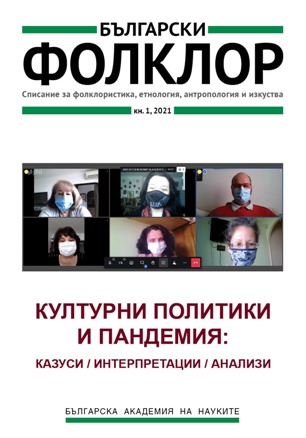
The measures for limiting the distribution of COVID-19 that have been undertaken by the state during the last months affected many institutions and people engaged with the preservation of local cultural heritage, both tangible and intangible. The article discusses the official policies towards the community centres (chitalishta) in the current complicated situation caused by the pandemic crisis. Additionally, it utilises direct observations in the field, in the media and in internet milieu, and interviews with community centre workers and representatives of communities that are successors of cultural heritage. Based on concrete examples, the study offers a general and up-to-date picture of preservation practices, developed on local level, such as the ethnographic collections at the community centres, the non-professional groups for folklore, and different initiatives related to the popularisation and socialisation of cultural heritage.
More...

Scientific life, conference report
More...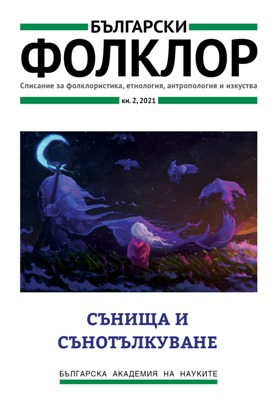
In this article, I offer a summarized survey of the different folklore genres in Bulgarian traditional culture that refer to dreams, dream interpretation and the consequences of dreams. The study is based on a substantial number of narratives of dreams and dream interpretations that I have recorded through fieldwork, and on my research on this topic. I have also utilized published and archive materials, dating since the Bulgarian Revival period until modern times, and published research by folklorists and ethnographers from the distant past until the present day. I delineate the main principles of dream interpretation; the ways of dream interpretation, and the factors that influence it. It is underlined that dream interpretation is part of the cultural education in patriarchal Bulgarian society as an essential element of the skills and practices referring to predicting the future. All of this confirms the fact that dreams and dream interpretation are a significant part of the system of Bulgarian traditional culture. I emphasize the unity of opposites, which is basic for the classification and interpretation of dreams. It is an important characteristic of Bulgarian traditional culture as a whole and also of the Bulgarian culture and language from the Middle Ages until modern times. Simultaneously, I also dwell on the analytical-psychological essence the unity of opposites. Special attention is paid to the crucial role of the context for the correct interpretation of dreams, which corresponds to the method of amplification in Jungian psychology.
More...
The article deals with the semantic and functional interrelations between folktales and dreams and with the role of dreaming as a component which defines the structure of the folktale plots. The author discusses the symptomatic lack of the dream motif in one of the key studies in the humanities of the twentieth century, Vladimir Propp’s “Morphology of the Folktale” (1928). The study emphasizes the special place that the motif of dreaming has in folktales and analyses the versatile development of the narrative through the situations of “a folktale in the dream” and “a dream in the folktale.” The focus of attention is on the folktales from “One Thousand and One Nights,” through which a range of narrative techniques and plots enter European culture, along with a plethora of themes and motifs related to dreams and dreaming. Based on the analysis, the author elicits two main models of assimilation of dreams/ sleep in folktales: the model of Sleeping Beauty and the model of Scheherazade, which represent respectively sleeping as a fact provoking no plot, and the dream as a tale. The conclusion offers an explanation of the absence of the dreaming motif from Propp’s folktale morphology and draws a parallel between the theory of the functions in folktale plots and the idea of the psyche’s protective mechanisms in psychoanalytical tradition.
More...
In his book “The Myth of the Birth of the Hero” (1909), the psychoanalyst Otto Rank identified in various cultures numerous versions of the same narrative which was very close in content to the Oedipus myth. The structure of this repetitive plot is the following: a son of a king, sentenced to death by his father, survives miraculously and grows up far away from his family; when grown-up, he returns to his hometown, murders his father and inherits the throne. The paper argues that this plot has come into being as a narrative aimed at legitimizing the right of existence of a newly formed community by presenting its leader as the legitimate successor of the ruler of the group from which the new community has separated. After its dramaturgical rendition by the ancient Greek tragedians, the Oedipus plot has acquired a new meaning – it started functioning as a story of the great sinner.
More...
The text is dedicated to two movies based on Alberto Moravia’s book “Ciociara”. The author examines some folklore motifs through which the role of the woman is presented. The analysis also includes the dream of a wedding, which transforms the understanding of time-space relationship. Outlining authentic folklore motifs in the film narrative is in the centre of the study, together with the original presentation of the person having the wedding dream, which forms the visual core of the film. Central point in the text is the relation between reality and the way it is experienced by the dreamer.
More...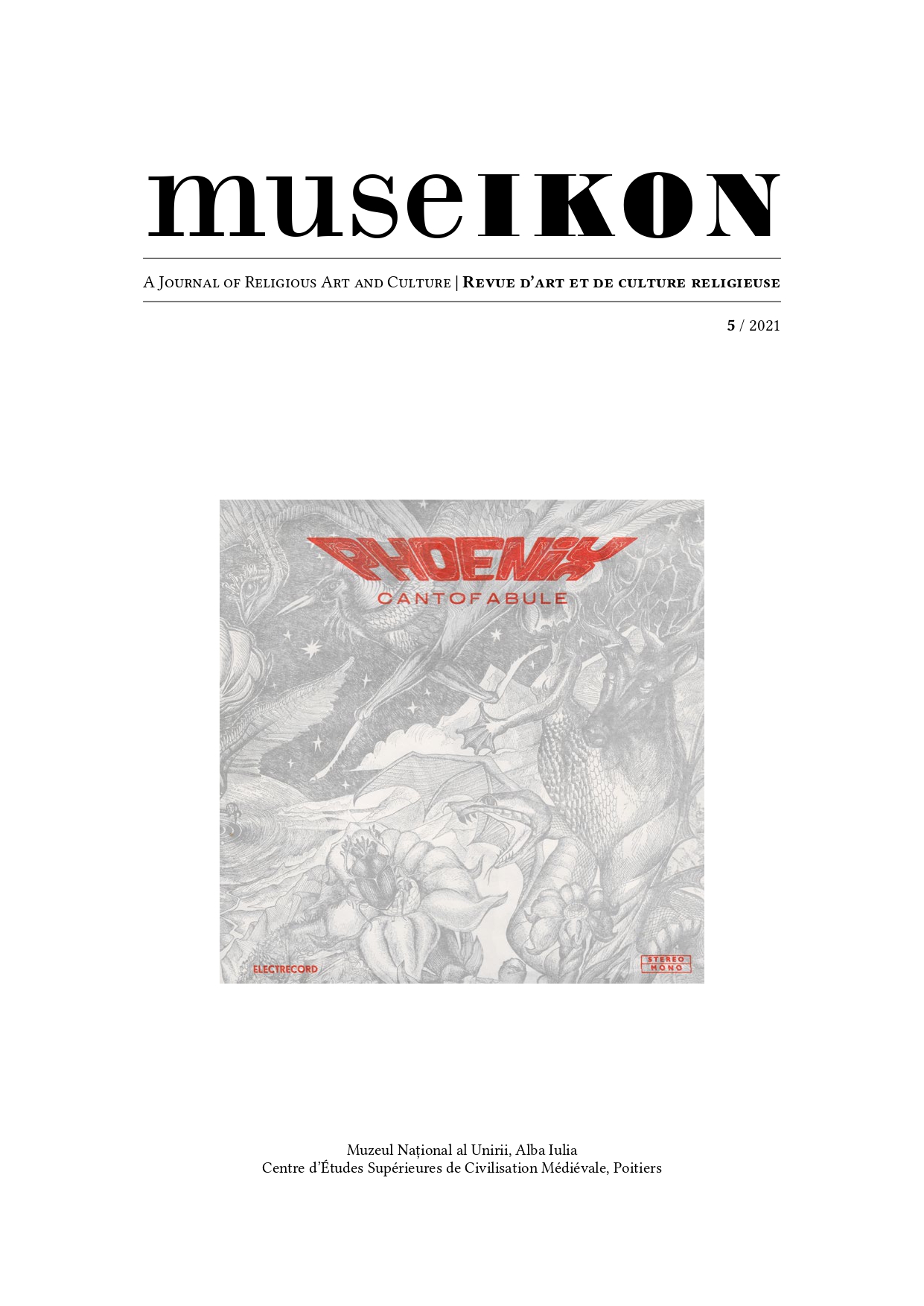
Born in 1951 in Timișoara, Elisabeth Ochsenfeld lives today between Heidelberg (de), Frankfurt am Main (de) and Wolfsberg / Gărâna (ro). She graduated the Faculty of Fine Arts, University of Timișoara, in the class of Professor Leon Vreme (1973); she directed the Art Group—Studio 35 in Timișoara(1974-1980) and has had, from 1973 to date, several exhibitions of painting, drawing, mixed media, photography, and illustrations, being also the curator of a large number of exhibitions and artistic events. In 1975 she finalized the drawings for the cover of the double LP Phoenix Cantafabule based on an idea of Valeriu Sepi. She immigrated to Germany in 1986 and soon thereafter became a graphic artist for the project Rock Carvings and Inscriptions along the Karakorum Highway at the Heidelberg Academy of Sciences and Humanities (1987-2012). Her works are displayed in galleries, museums and private collections across Germany, Romania, England, the Netherlands, France, Italy, Austria, Ukraine, Hungary, Belgium, Israel, Greece, Sweden, Pakistan, Finland, South Korea, the USA, and Canada. She is the founder of Arthouse Wolfsberg / Gărâna and a member of the Association of Professional Artists in Germany, the International Women’s Cultural Federation, Freeinterartists, and Contemporanii.
More...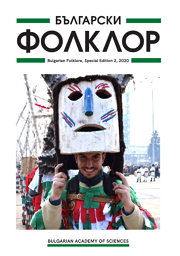
The article studies the role of the musician in Alevi-Bektashi culture in the region of Kardzhali, Southern Bulgaria. The musician in that culture performs simultaneously religious, social and artistic roles. He is a figure whose qualities allow the researcher to associate him with the cultural type of the epic musician. His non-professional but specialized activity is presented from an insider’s viewpoint detailing the specific characteristics of that activity, the approaches applied in the process of training in it, through the qualitative evaluation of the musicians and the differences in their performance manners. The author presents the biographical trajectory and the performance style of a contemporary young Bektashi musician from the region in order to depict his portrait. The interaction between his outstanding talent and his strong religious devotion define his complex development as a musician and a member of the Heterodox Muslim community.
More...
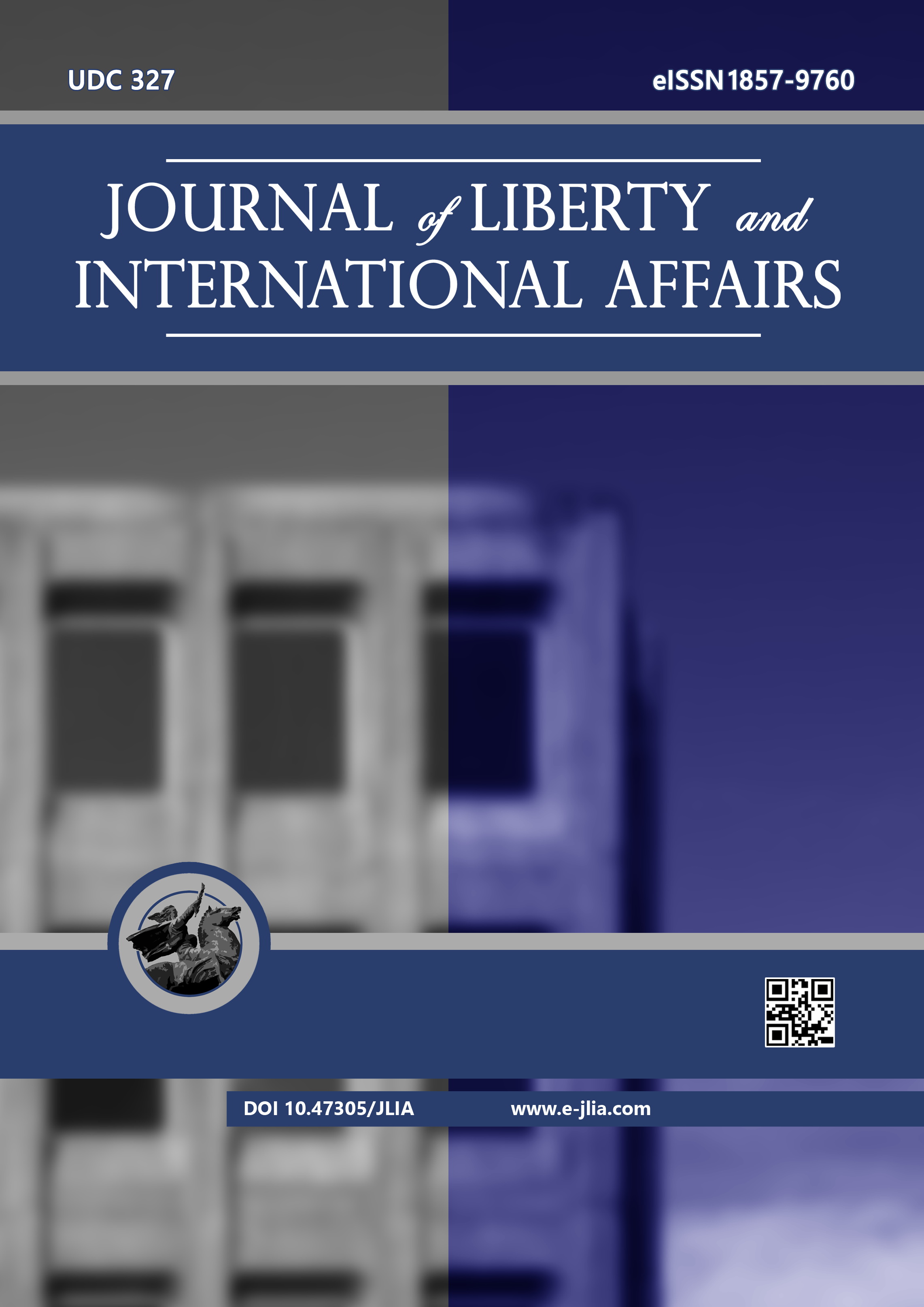
In this paper, we analyzed the current refugee crisis in Europe by discussing its main characteristics within the European context. A comparison between the different routes in Western, Central, and Eastern Mediterranean, the Western Balkans, and in general in South-Eastern Europe was done. As the main research problem, we focused on Bulgaria as an entry gate for the arriving immigrants and we presented the most recent statistics related to the illegal entries in the country. Among our objectives was the analysis of the current problems at the reception centers in the South-Eastern part of Bulgaria. An important part of our methodology consisted of direct interviews performed with the local and immigrant population at the center of Harmanli. The key results of our analysis showed that despite the attempts on the part of the officials for successful integration of the immigrants, there were still important needs for improvement. In conclusion, we suggested that the use of good practices from other countries with experience in migration policies might contribute to better integration and improvement of the mutual respect between local and migrant populations.
More...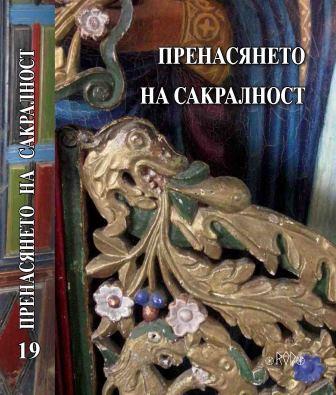


Data about scientific events in the field of the humanities in Bulgaria in 2015Content of the main Bulgarian scientific journals for the current year in linguistics, literature, history, folklore, ethnography, archaeology and art studies.
More...